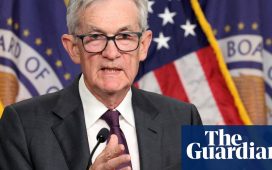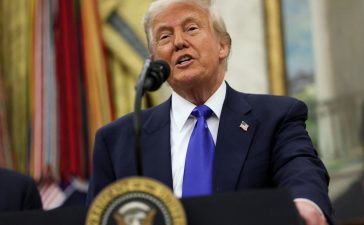Unlock the Editor’s Digest for free
Roula Khalaf, Editor of the FT, selects her favourite stories in this weekly newsletter.
The Bank of England has held rates at a 16-year high of 5.25 per cent since August last year but a majority of economists think it will begin its cutting cycle at its monetary policy meeting on Thursday.
More than 80 per cent of economists polled by Reuters over the past week predict the bank will deliver a quarter point cut next week. But traders in swaps markets are less convinced, pricing an even split on the chances of the central bank lowering interest rates or not.
Markets have shied away from bets on an August rate cut in recent weeks after a surprisingly robust UK economy and stronger than expected services inflation have weakened the case for the central bank to lower borrowing costs.
“We look for a [quarter percentage point] rate cut next week, but in a very tight 5-4 vote,” said Allan Monks of JPMorgan. “A cut would feel like it’s coming despite, rather than because of, data developments since May . . . The case for lower rates is far from clear”.
One reason economists expect a cut next week is because of a recent tweak to the guidance from the BoE’s monetary policy committee. In June it said as part of the August forecast round, “members . . . will consider all the information available and how this affects the assessment that the risks from inflation persistence are receding”.
This implies the BoE has decided inflation risks are receding. Monks said a more subtle interpretation is that the MPC is already discounting measures of inflation persistence and is forming its judgment based on a more opaque and subjective assessment of risk. “That perhaps creates more leeway for the BoE to cut in the face of strong data,” he said.
An August cut would put the BoE ahead of the Federal Reserve, which is expected to lower rates in September, but behind the European Central Bank which made its first cut in June, before holding rates this month. Mary McDougall
Will the Fed lay the groundwork for a September rate cut?
At its two-day meeting next week, the Fed is widely expected to keep interest rates on hold, but will give investors important insight into whether or not it plans to cut rates at its September meeting.
Evidence that the US economy has slowed, and that inflation is finally moving towards the central bank’s 2 per cent target, has pushed traders in the futures market to bet that the Fed will at last cut interest rates from current 23-year highs when it meets in September. Traders in that market are betting on an additional one or two cuts later in the year.
That’s more than was indicated in the Fed’s last dot plot — officially the “Summary of Economic Projections” — which is a survey of officials’ views on where interest rates, inflation and unemployment will be in the coming years. That last report, released in June, showed the median voter was expecting just one interest rate cut this year.
But economic data has changed meaningfully since then. While the US added more jobs than expected in June, the unemployment rate ticked up to 4.1 per cent, the highest level since November 2021. Recent data has also showed inflation slowing — the consumer price index fell to 3 per cent in June, faster than expected. The latest personal consumption expenditures data released Friday, showed that the core measure — which strips out the volatile food and energy sectors and is the Fed’s preferred gauge of inflation — was 2.6 per cent.
“The June PCE report is consistent with the Fed holding interest rates steady at next week’s decision, then making a first interest rate cut at the following meeting in September,” said Bill Adams, chief economist at Comerica Bank. Kate Duguid
Will the Bank of Japan raise rates?
Investors are cranking up bets on the Bank of Japan raising its key short term interest rate next week following reports that the outcome of its July 30-31 policy meeting would be a close call.
Traders in swaps markets are now evenly split on the prospect of the Bank of Japan lifting its key rate 0.15 percentage points to 0.25 per cent next week, up from a probability of a quarter earlier this month.
Rising expectations that the BoJ could lift rates in July has helped fuel a sharp rally in the yen, which has surged 2.5 per cent against the dollar this week, boosted by an unwind of excessive short positioning on the yen.
Still, a majority of economists polled by Bloomberg expect the BoJ will stand pat and keep short-term rates at a target range of 0 to 0.1 per cent, a level they have been held at since March as the central bank takes a cautious approach to tightening policy.
“Surveys suggest that only about a third of economists are expecting a BoJ rate hike next week — but the vast majority acknowledge that it is a risk,” wrote analysts at Rabobank, adding that the uncertainty could spark “some volatility” in the yen. Mary McDougall







